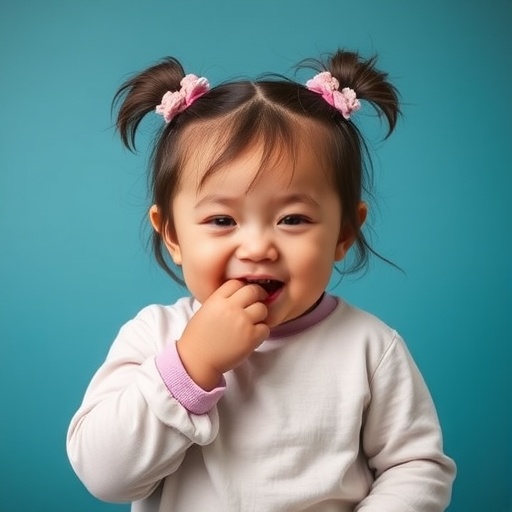The phenomenon of posterior drooling in children and young people with neurodevelopmental disabilities has emerged as a significant area of concern among caregivers and healthcare professionals alike. Drooling is not merely a benign inconvenience; it can often lead to social isolation, diminished self-esteem, and emotional distress for both children and their families. In recent research, Orriëns et al. delve deep into this topic. Their findings shed light on the multifaceted nature of drooling and articulate the parental perspective surrounding this condition.
Posterior drooling refers to excessive saliva accumulation and subsequent loss at the back of the mouth, often seen in children with conditions such as cerebral palsy, autism spectrum disorders, and other neurodevelopmental challenges. This involuntary phenomenon speaks volumes about the complex interplay between neurological function and physical capability. As children with these disabilities often face a myriad of challenges, drooling frequently adds another layer of difficulty that can complicate everyday life for both the affected individuals and their caretakers.
In their comprehensive study, Orriëns and colleagues conducted qualitative interviews with parents, unearthing a wealth of insight into the reality of living with drooling. The parents highlighted a range of emotions, from frustration to helplessness, as they navigated a lack of resources and support concerning this issue. The feelings expressed during these dialogues illustrated the pervasive impact drooling can have on family life, feeding into a broader narrative of societal misunderstanding regarding neurodevelopmental disabilities.
One major point raised in the research is the distinction between ordinary saliva production and the problematic drooling associated with various disorders. While all children produce saliva, those with neurodevelopmental disabilities often struggle with muscle coordination, increasing the likelihood of saliva spilling over. Moreover, the psychological factors surrounding drooling cannot be overlooked. Many parents reported anxiety regarding public perception and the possible stigmatization their children face, amplifying their own stress levels in social situations.
Orriëns et al. also examined potential interventions and management strategies for posterior drooling. From behavioral therapies to medical solutions, a spectrum of options exists; however, parents often find themselves overwhelmed and uncertain. Seeking clarity within the plethora of information can be a Herculean task, but greater educational outreach could prove invaluable. By educating parents and caregivers, healthcare professionals can empower these families to take effective measures to manage drooling more successfully.
Furthermore, the research highlighted the crucial role of a multidisciplinary approach in treatment planning. Involving various specialists—such as speech therapists, occupational therapists, and neurologists—can facilitate a more holistic understanding of a child’s needs. Collaborative efforts among these professionals can yield more personalized management strategies, ultimately enhancing the quality of life for affected children. This approach can help demystify the complexities of drooling and better equip families to tackle this issue head-on.
The emotional and psychological implications of drooling extend beyond the child to affect the entire family dynamic. Parents expressed a profound desire for community and understanding from others. Many described feelings of isolation and a lack of relatable experiences among peers. Opportunities for shared experiences could foster collaboration and collective problem-solving, enabling families to share tips and find solace while navigating the challenges of parenting a child with a neurodevelopmental disability.
Additionally, the study addresses the importance of advocating for systemic changes within healthcare. As research continues to unravel the layers behind posterior drooling, there exists a pressing need for both clinicians and policymakers to create comprehensive support frameworks that recognize these challenges. Integrating training programs for healthcare providers could ensure that they are well-equipped to address the concerns of families, ultimately leading to better care standards across the board.
The intersection of drooling with social factors cannot be underestimated. The parents involved in the study articulated a pressing need for public awareness campaigns to dispel myths and foster understanding regarding neurodevelopmental disabilities. Such initiatives can significantly reduce stigma and enable society to embrace diversity rather than shy away from it. A shared understanding can lead to more inclusive environments, allowing families to engage in public and social spheres without fear of judgment.
As we consider the broader implications of this research, it provokes critical questions about the visibility and discourse surrounding neurodevelopmental disabilities. The spotlight on drooling serves as a lens through which we can examine our societal structures and attitudes toward those who differ from the normative population. Creating a dialogue can enhance both empathy and awareness, paving the way for more inclusive communities.
Current findings in this research could also spark further inquiry into the biological mechanisms behind drooling, as understanding the causative factors may allow for better-targeted therapies. Future studies could focus on the role of salivary gland functioning and neuromuscular coordination, potentially leading to innovative treatments. Additionally, integrating perspectives from various stakeholders, including teachers and therapists, could yield deeper insights into how to manage drooling within educational settings.
As the discourse surrounding posterior drooling evolves, so too must our approaches to understanding and addressing this concern. Families affected by neurodevelopmental disabilities deserve access to resources, support systems, and a community that understands their unique challenges. By investing in both research and public awareness, the societal narrative can shift from one of misunderstanding to one that embraces diversity and promotes acceptance.
Overall, Orriëns et al.’s study provides a valuable contribution to our understanding of posterior drooling in children with neurodevelopmental disabilities. Their insights not only humanize the statistics but also invite us to reflect on our attitudes and behaviors toward those who are different from us. As we strive for a more inclusive world, let us heed this clarion call for understanding, compassion, and action.
Subject of Research: Posterior drooling in children and young people with neurodevelopmental disabilities.
Article Title: Understanding posterior drooling in children and young people with neurodevelopmental disabilities: a parental perspective.
Article References:
Orriëns, L.B., van der Burg, J.J., Maille-Wisse, P. et al. Understanding posterior drooling in children and young people with neurodevelopmental disabilities: a parental perspective.
BMC Pediatr 25, 789 (2025). https://doi.org/10.1186/s12887-025-06039-z
Image Credits: AI Generated
DOI:
Keywords: Neurodevelopmental disabilities, posterior drooling, parental perspective, healthcare, multidisciplinary approach, social stigma.




